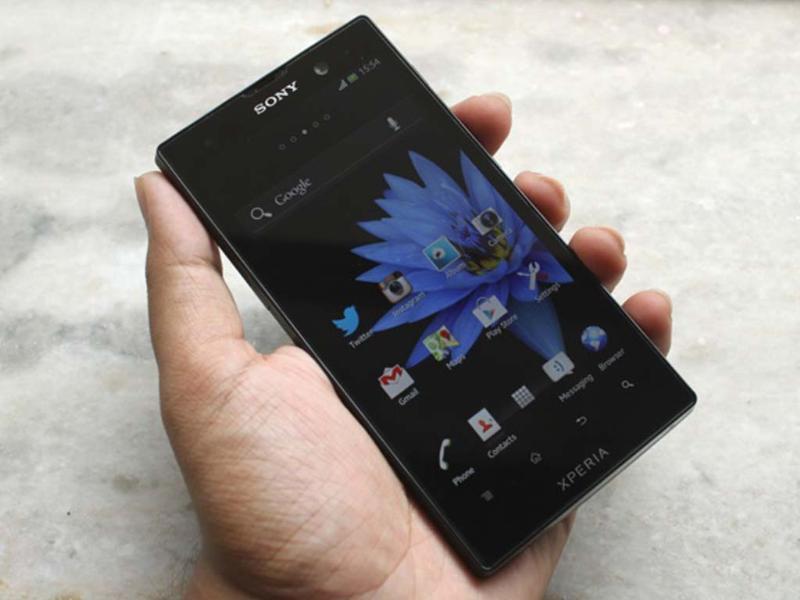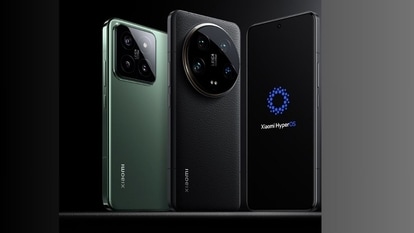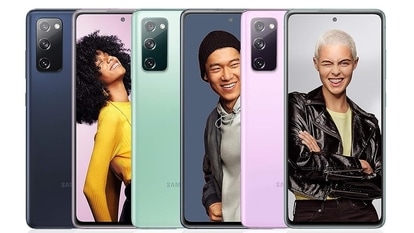Review: Sony Xperia ion
The Xperia ion is a modest upgrade over the Xperia S but improves upon key factors such as display and build quality. What makes things worse for the ion, though, is its pricing, which puts it right in the One X and Galaxy S III territory.

Ever since Sony absorbed Ericsson's stake in the company and became just Sony Mobile, the company has went on to flood the market with a ton of new phones, some of them with just minor differences from the other.
One such phone is the new Xperia ion, which differs from the previous Xperia S in so few ways you can count them all on one hand with fingers to spare. We decided to take a look and see what all is new.
Design
The design is one of the major differences between the Xperia ion and the Xperia S. The Xperia S is a fine looking phone but the Xperia ion takes things up a few notches. It drops the now familiar transparent glass strip at the bottom and goes for a monolithic design. You'll notice on the front that there are now four instead of three keys below the displays, each with its own icons. We'll get to these later.




On the back you will find an all new metal shell covering almost the entire back surface. There are just three plastic strips, one each on the top, bottom and the left, which is where all the antennas reside. The top portion comes off and inside you will find the micro SIM and the microSD card slot. The NFC antenna is also located at the top, so that's where you'll have to touch the phone if you want to initiate a data transfer.


On the right edge of the phone (when seen from the front) are the power button, volume control buttons and the camera shutter key. All these keys are extremely thin and small for such a large phone and difficult to use, particularly the power button, which is just the most annoying thing on the entire phone. It's ridiculously tiny so your finger keeps hunting for it every time you want to lock or unlock the phone unless you are looking directly at it. The positioning of the power and volume buttons on the same side of the phone also makes it awkward to take screenshots.


On the left side of the phone are the micro USB and micro HDMI ports placed neatly inside a plastic flap. They are both nearly of the same shape so you will have a hard time initially figuring out which is which and it doesn't get any easier in the dark when you're trying to connect a cable.


On the top sits the lonely headphone jack in the middle.
Getting back to the keys below the display, if you read our Xperia S review, you'd know that I complained a lot about the unfortunately design of these keys, which makes them extremely difficult and frustrating to use. Unfortunately, instead of improving upon that design, Sony has made it worse on the Xperia ion.


All four keys have icons and none of them are backlit. Instead, there is a tiny white strip of light below each of them that is so dim that it is hard to see even in darkness. Now here comes the ridiculous part. The touch sensors for these keys is placed on neither the icons nor the white strips but rather slightly above the icons and just below the display. So if you press on the icon basically nothing happens until you realize you have to press a bit above. And even then the touch area is extremely small and the keys aren't very sensitive so if you press lightly or a bit below nothing happens. And in the dark it's practically things get even worse because the stupid strips of light switch off a few seconds later, causing you to hunt around for the keys.
At this point it seems Sony was just trying to see how far the user could go before they throw the phone out of the window out of sheer frustration. If this was not their intention then it makes me wonder what on Earth would have made them chose such an atrocious design for such an important part of the phone's user experience and why couldn't they learn from the universally hated keys below the Xperia S. It also makes you wonder how much time Sony actually spent testing these devices before deeming them fit for selling on the market.
Other than that the hardware of the Xperia ion feels really great. It's not as narrow as the Xperia S due to the bigger display, which we will talk about next, but the metal body feels really sturdy and premium, especially compared to plasticky phones like the Galaxy S III or the Optimus 4X HD. Even the design is very handsome and carries the classic Sony design language of simple but strong design lines. Just wish it was more user friendly.
Display
The display is the second biggest difference on the Xperia ion over the Xperia S. The Xperia S had a 4.3-inch HD display whereas the 4.55-inch HD display. On paper it might seem as if it's just a bigger display but it's not just that, it's a much better display. The Xperia S display was pretty mediocre and the only thing really going for it was the pixel density, which is very high. The Xperia ion display trades some of the pixel density for significantly better colors, contrast and black levels.
The display on the Xperia ion looks really rich and vibrant and colors, to use the tired phrase, really pop. Photos, videos, games, applications, everything looks better on this screen compared to the Xperia S. It still hasn't improved in some aspects, though. It is still using a low refresh rate, which causes noticeable blur while scrolling, especially in the browser and the viewing angles are still unimpressive. But overall this display is a big leap ahead of the Xperia S display. Still not as good as the display on the One X, though, which remains the best in the business.
Hardware and Software
That is pretty much it when it comes to differences between the Xperia ion and the Xperia S. On the inside, both the phones are running the exact same hardware. On the hardware front, both phones have a Qualcomm Snapdragon MSM8260 SoC with a dual-core 1.5GHz Scorpion CPU and Adreno 220 GPU. On the memory side, both phones have 1GB of RAM. Only differences is that the Xperia S had 32GB non-expandable internal memory whereas the Xperia ion has 16GB with a microSD card slot.
On the software side, the Xperia S launched with Android 2.3, Gingerbread but things have changed in the past month and it now runs on Android 4.0.4, Ice Cream Sandwich, which is exactly the same as the software found on the Xperia ion.


Since this is the first time we are seeing it, I'd like to talk about it. Having used a lot of custom Android user interfaces over the years, I must say I love what Sony has done with the software on these new Xperia phones. The UI on the new ICS ROMs on these phones is top notch and at least to me is the best looking of all the custom interfaces out there. The UI is just plain classy and unmatched in the aspect by any of its competitors. Sense UI in comparison just seems bloated and gaudy while the Nature UX looks its usual juvenile self. Sony's UI is sleek, stylish, user friendly and filled with some nice touches.


Take the Album application, for example, which is the custom photo gallery app on the Xperia ion. The photos appear in a grid with the latest one being the largest. You can pinch to zoom on the grid to go from one image taking the entire width of the display to up to eight tiny images side by side. In this last mode you can have an incredible 104 thumbnails on the screen at once, which is convenient if you have a ton of images in the gallery.
Even the video player is nice. It shows large vertical thumbnails for your videos and when you click on them it shows you data pulled from Gracenote for your movies, such as description, actor names, etc.
There are a few things where the Xperia UI lags behind the competition, namely in the lockscreen and the notification screen department. All of its rivals are now offering the option to have multiple icons on the homescreen that you can quickly launch while simultaneously unlocking the phone. The Xperia UI only has the option to start the camera and even that is not very useful when you consider you can press and hold the shutter key to do the same.
The notification area is also lacking any shortcut icons that you can use to quickly access certain functions from anywhere in the UI.
The pre-installed software on the Xperia Ion is fairly minimal and you can uninstall most of them. They will, however, return if you choose to reset your phone.
Performance
A good looking UI is just half the story. The performance is equally important. Unfortunately, here things are a bit of a mixed bag for the Xperia ion. The UI stutters quite a bit when using the stock applications on the phone. This is especially noticeable when using the Settings applications. It's a bit perplexing because none of these applications are particularly complex and shouldn't be taxing the system so much.
However, things are quite a bit different while running third party applications. Basic applications such as Twitter or Facebook to high quality 3D games such as Dead Trigger were handled perfectly by the Xperia ion despite running on last year's hardware. The performance difference between the stock and third party apps is a bit alarming and points to lack of optimization on Sony's part rather than the hardware itself, which seems capable of handling almost anything that you can throw at it.
Moving on to the other aspects of the performance, I noticed that the loudspeaker on the Xperia ion sounded terrible. It was barely audible in some cases and sounded as if it was being blocked by something. You could boost the sound a bit by using the xLOUD present in the settings but that just makes it a bit louder and the quality remains terrible.
Thankfully, Sony provides a solid pair of in-ear headset with the phone. The sound quality with these is really good for a bundled pair of earphones and most people would never feel the need to upgrade.


I tried playing some HD videos on the Ion. The default video player, although looks great and pulls up useful information, does not support a lot of formats. You can easily get around that problem, though, by downloading a free third party video player, such as MXPlayer or DicePlayer.
The network reception and the general radio performance on the Xperia ion was satisfactory.
Camera
The Xperia ion has the same 12 megapixel camera from the Xperia S. From the camera specifications down to the camera software is identical. In terms of image quality, this is still one of the best camera phones on the market, with superb high resolution images with good amount of detail. It's only problem is the noise level, which is too high, even in day light images. This is remedied by using night mode in low light situations but you have to hold the phone very still or use support otherwise it generates blurry images.




Video quality-wise the camera isn't particularly impressive. The videos have the same noisy look as the stills but lack the clarity and the detail and not in line with the quality offered by competing devices, such as the Galaxy S III.
Battery Life
I didn't get time to run the Xperia ion through our usual battery life tests but in my daily usage I got around a day of battery life, which is similar to the Xperia S. With most of the specifications being identical between the two phones I can't imagine the battery life being any different.
Verdict
The Xperia ion is a modest upgrade over the Xperia S but improves upon key factors such as display and build quality. Unfortunately, it is too similar in other aspects and even retains the annoying behavior of the keys below the display. It makes us wonder why Sony bothered with the original Xperia S at all if they were going to launch the ion just a few months later.
What makes things worse for the ion, though, is its pricing, which puts it right in the One X and Galaxy S III territory. As nice as the Xperia ion is, it is not good enough compared to these phones, both of which feature vastly more powerful hardware and better display performance. Had it been priced under the ₹ 30,000 mark, it would have been worth considering but at its current price I can't help but suggest you give this one a miss. This is especially true considering Sony is bound to announce a new flagship soon in the form of the Xperia T/TX and you would definitely want to wait for that if you're a Sony fan.




Catch all the Latest Tech News, Mobile News, Laptop News, Gaming news, Wearables News , How To News, also keep up with us on Whatsapp channel,Twitter, Facebook, Google News, and Instagram. For our latest videos, subscribe to our YouTube channel.


























